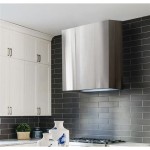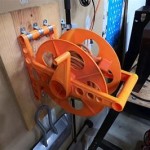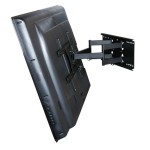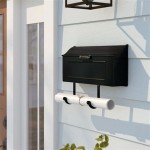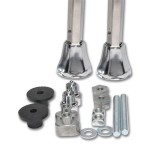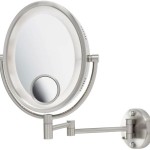Wall Mount Fans with Remote Control: A Comprehensive Overview
Wall mount fans with remote control represent a practical and convenient solution for circulating air in various environments. Their design allows for space-saving installation, while the inclusion of a remote control offers ease of operation from a distance. This combination makes them a popular choice for residential, commercial, and industrial settings where efficient air circulation and user convenience are prioritized.
The functionality of a wall mount fan is rooted in its ability to move air within a room. By drawing air in from one side and expelling it from the other, these fans create a consistent airflow that can help to cool the environment, reduce humidity, and improve overall air quality. The wall-mounted design elevates the fan, ensuring the airflow is distributed more effectively across the room, compared to floor-standing models.
The integration of a remote control adds a significant layer of convenience. Users can adjust the fan's speed, oscillation, and other settings without needing to physically reach the unit. This is particularly beneficial in spaces with high ceilings or in environments where accessibility is limited. The remote control often includes features such as timer settings, allowing users to program the fan to operate for specific durations, further enhancing energy efficiency and user comfort.
Key Benefits of Wall Mount Fans with Remote Control
Wall mount fans with remote controls offer a multitude of advantages, making them a desirable cooling and ventilation solution. Their space-saving design, convenient remote operation, and versatility contribute to their widespread adoption in diverse settings.
Space Optimization: One of the primary advantages of wall mount fans is their ability to conserve floor space. In smaller rooms or areas where floor space is at a premium, mounting the fan on the wall frees up valuable area for other furniture or activities. This is especially beneficial in apartments, offices, and workshops where maximizing space is a key consideration. The elevated positioning also ensures that the airflow is not obstructed by furniture or other objects, allowing for more effective air circulation throughout the room.
Enhanced Convenience: The remote control functionality is a significant convenience factor. Users can easily adjust the fan's settings from anywhere in the room, eliminating the need to manually reach for the unit. This is particularly useful for individuals with mobility issues or in environments where the fan is mounted in a hard-to-reach location. The remote control often provides access to a range of settings, including fan speed, oscillation, timer functions, and sometimes even pre-programmed modes for different cooling needs. This level of control allows users to customize the airflow to their precise preferences, ensuring optimal comfort.
Improved Air Circulation: Wall mount fans are designed to effectively circulate air throughout a room. By drawing air in and expelling it in a consistent stream, they help to prevent stagnant air pockets and promote even temperature distribution. This is particularly beneficial in larger rooms or areas with poor ventilation. The elevated positioning of the fan allows it to reach a wider area, ensuring that the airflow is not limited to a small zone. Proper air circulation can also help to reduce humidity, which can contribute to a more comfortable and healthier indoor environment. Furthermore, it can assist in preventing the growth of mold and mildew, which thrive in damp conditions.
Factors to Consider When Choosing a Wall Mount Fan
Selecting the right wall mount fan with remote control requires careful consideration of several factors, ensuring that the chosen unit meets the specific needs of the intended environment. These considerations include fan size, airflow capacity, noise level, remote control features, and energy efficiency.
Fan Size and Airflow Capacity: The size of the fan and its airflow capacity are crucial factors in determining its effectiveness. The size should be proportionate to the size of the room. A larger room will require a larger fan with a higher airflow capacity to ensure adequate circulation. Airflow capacity is typically measured in cubic feet per minute (CFM), and a higher CFM rating indicates that the fan can move more air. Consider the dimensions of the room and the desired level of air circulation when selecting a fan with the appropriate size and CFM rating. Online calculators and guides can assist in determining the optimal CFM for a given room size.
Noise Level: The noise level of the fan is an important consideration, especially for use in bedrooms, offices, or other quiet environments. Fan noise is typically measured in decibels (dB), and a lower dB rating indicates a quieter fan. Look for fans that are specifically designed for quiet operation, often featuring features such as balanced blades and noise-dampening materials. Reading customer reviews can also provide valuable insights into the real-world noise levels of different fan models. Consider the intended use of the fan and the sensitivity of the occupants to noise when making a selection.
Remote Control Features: The features offered by the remote control can significantly impact the user experience. Basic remote controls typically include on/off, speed control, and oscillation functions. More advanced remote controls may offer additional features such as timer settings, pre-programmed modes, and even temperature sensors that automatically adjust the fan speed based on the room temperature. Consider the features that are most important to you and choose a fan with a remote control that offers those functionalities. Also, consider the range of the remote control to ensure it will work effectively from all areas of the room.
Energy Efficiency: Energy efficiency is an increasingly important consideration for consumers. Look for fans that are Energy Star certified, which indicates that they meet strict energy efficiency guidelines set by the Environmental Protection Agency (EPA). Energy Star certified fans typically use significantly less energy than standard fans, which can save money on electricity bills over time. Consider the fan's wattage rating and compare it to other models to assess its energy efficiency. Also, consider using the timer function on the remote control to automatically turn off the fan when it is not needed, further reducing energy consumption.
Installation and Maintenance of Wall Mount Fans
Proper installation and regular maintenance are essential for ensuring the safe and efficient operation of wall mount fans with remote control. Following the manufacturer's instructions during installation is crucial for preventing accidents and ensuring the fan is securely mounted. Regular cleaning and lubrication can help to extend the lifespan of the fan and maintain its performance.
Installation Procedures: Installing a wall mount fan typically involves attaching a mounting bracket to the wall and then securing the fan to the bracket. The mounting bracket should be securely attached to a wall stud or other structural support to ensure that the fan is stable and does not fall. Always follow the manufacturer's instructions carefully during installation. If you are not comfortable performing electrical work, it is best to hire a qualified electrician to install the fan. Ensure that the power is turned off at the breaker before starting any electrical work. Double-check all connections and screws to ensure they are tight and secure. After installation, test the fan to ensure it is operating correctly and that all features, including the remote control, are functioning as expected.
Cleaning and Maintenance: Regular cleaning is essential for maintaining the performance and appearance of the fan. Dust and debris can accumulate on the fan blades and motor, reducing airflow and increasing noise. To clean the fan, first turn off the power at the breaker. Then, use a soft cloth or brush to remove dust from the fan blades, motor housing, and remote control. For stubborn dirt, you can use a mild detergent solution. Be sure to dry all surfaces thoroughly before turning the power back on. Periodically check the fan for loose screws or other signs of wear and tear. Tighten any loose screws and replace any worn parts as needed. Lubricating the motor bearings can also help to extend the lifespan of the fan and reduce noise. Refer to the manufacturer's instructions for specific lubrication recommendations.
Safety Precautions: When installing or maintaining a wall mount fan, it is important to take certain safety precautions to prevent accidents. Always turn off the power at the breaker before starting any electrical work. Wear safety glasses to protect your eyes from dust and debris. Use a ladder that is stable and appropriate for the height of the installation. Avoid overreaching or straining yourself while working. If you are not comfortable performing electrical work, hire a qualified electrician. Keep children and pets away from the work area to prevent accidents. Follow all manufacturer's instructions carefully and do not attempt to modify the fan in any way. Dispose of any old or damaged parts properly, following local regulations.

Wock Hicfm 20 In Yellow 5000 Cfm Orbital Remote Mounted Wall Fan 1 5 Hp Motor Timer Tilt Oscillation 3 Speed Ul Listed

Deeshe 5000 Cfm 20 In Orbital Remote Control Wall Mounted Fan

Lasko 16 In 3 Speed Oscillating Wall Fan White With Durable Construction Timer And Remote Control M16950

Honeywell 18 In Indoor Or Outdoor Black Wall Mounted Fan The Fans Department At Com

Comfort Zone 16 Inch Wall Mount Fan With Remote
Best Deal For Wall Mounted Oscillating Fan Mount Fans Retro Metal Algopix

Vevor Wall Mount Misting Fan 24 In 3 Speed High Velocity Max 7000 Cfm Waterproof Oscillating Gybgsfsycss24bcvov1 The Home

20 Inch Wall Mount Fan With 3 Speeds And Adjustable Tilt Head Costway

Mule Oscillating Wall Fan With Remote

Spt 16 In Oscillation Indoor Black Wall Mounted Fan Sf 16w81b At Com

